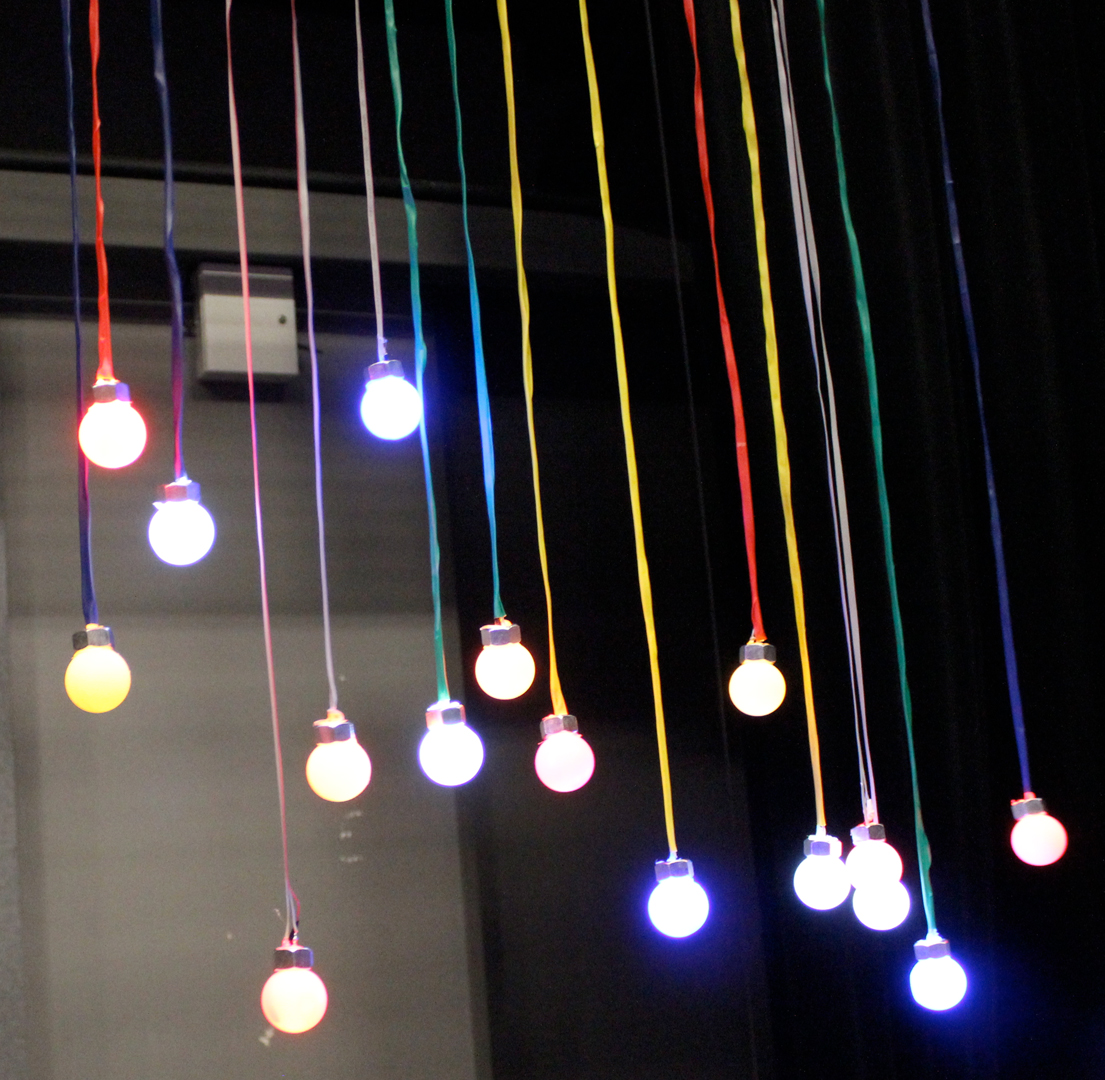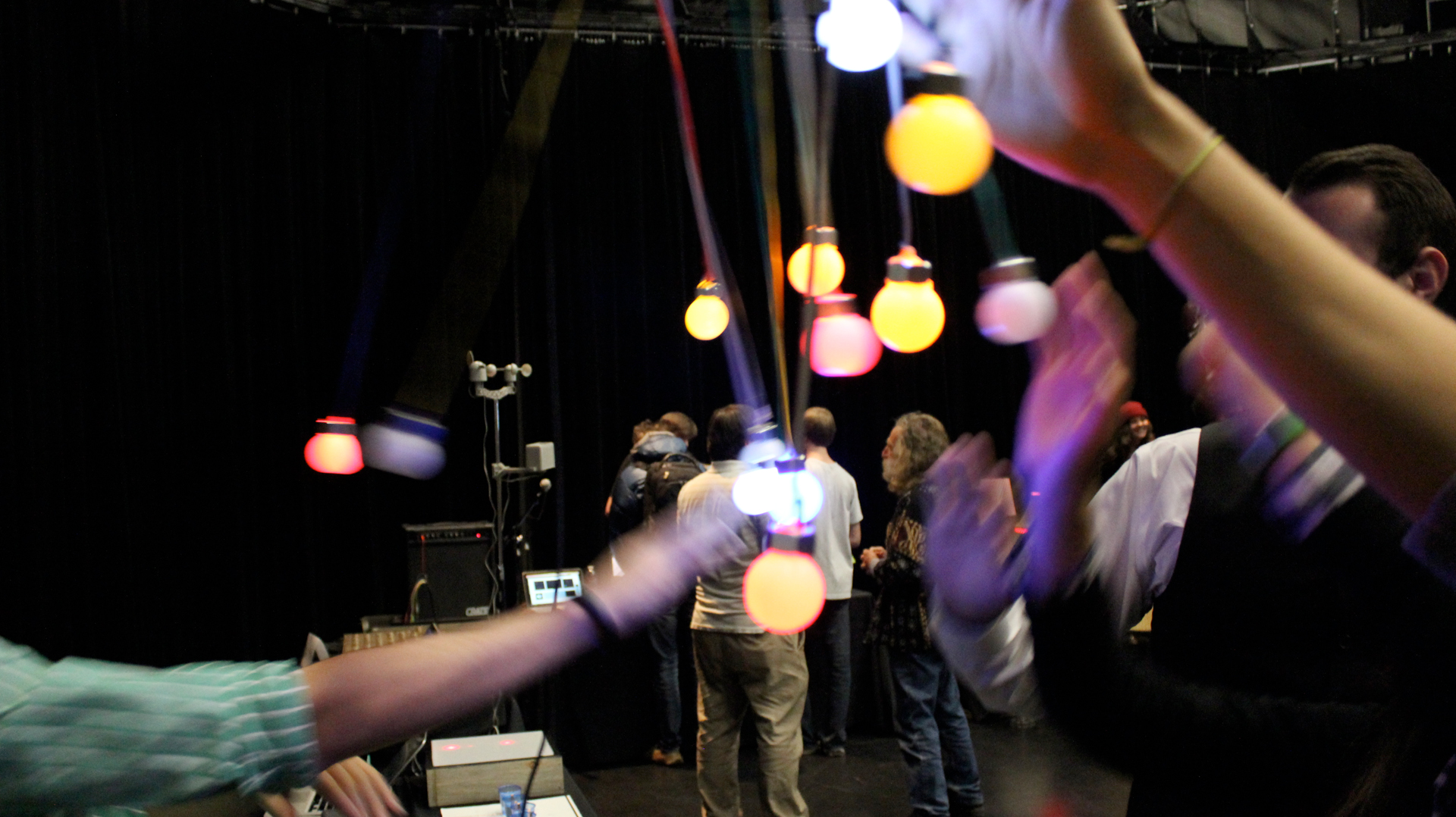“Kinetic Voices: A Tangible Musical Experience” presented by Narula
Symposium:
- ISEA2015: 21st International Symposium on Electronic Art
-
More presentations from ISEA2015:


Presentation Title:
- Kinetic Voices: A Tangible Musical Experience
Presenter(s):
Abstract:
This demonstration is of an interactive installation called Kinetic Voices, which is comprised of numerous LED lit balls hanging from the ceiling. Each ball has a unique color and a unique sound. Users can interact with the piece by flicking the ball, thereby activating them. The sound produced is that of a recorded female voice in the scale of C minor, with each ball representing a different note. This installation offers people an engaging tangible musical experience.
Kinetic Voices is an interactive sound and light installation, comprised of 16 different colored ping-pong balls (with LEDs) hanging from the ceiling. Each ball is motion sensitive and is triggered when it is ‘flicked’ or ‘bumped’ with other balls. Once a ball is triggered a sound is produced and the LED switches off momentarily. The sound produced is that of a recorded female voice in the scale of C minor, with each ball representing a different note. The vibration sensors and LEDs are controlled via an Arduino UNO. This installation uses 16 vibration sensors as digital inputs and 16 LEDs as digital outputs and in order expand the functionality of the Arduino, a MUX shield (made by Mayhew Labs) is used. A transistor switch circuit is also used to ensure optimal brightness of each LED. Pure Data (PD) is used to produce the sound when a ball is triggered. Serial communication is used to send data from the Arduino to PD. This is used to determine which ball has been triggered so that the appropriate noted in the scale can be played.
The ethos of the project was to create a fun and playful environment as way to increase social interaction. In order to achieve this goal, it was essential for the installation to be simple while being interactive and exciting. Wide ranges of colors were used as way to gain the attention of the observers. The hanging balls also created a sense of wonder and inquisitiveness, which urged the observers to play with the piece. No instructions were provided so it was up to the users to understand and figure out the interaction. This was a deliberate feature as the aim was to observe people rather than intervene or dictate a particular method of interaction. The ball were also hung at random heights, which made the installation seemingly more interesting and aesthetically pleasing. The sounds produced by the installation were also carefully selected to trigger a playful response. This was done by recording Annie Chung’s (a music student at University of Colorado) voice to generate notes in the C minor scale. A reverb filter was added to the sound to create an eerie effect.
To improve on this project further, the installation would be to scaled to include over 100 balls. This will not only allow many users to interact with the piece at the same time, but the enormity will add to the overall aesthetic of the installation. In such a scenario, each ball would also be hung at the exact same height. In such a configuration one would be able to swing the first ball (like a pendulum) causing it to hit the second one. The second one will then in turn hit the third one. This will continue as each ball is activated, creating a chain reaction effect.






